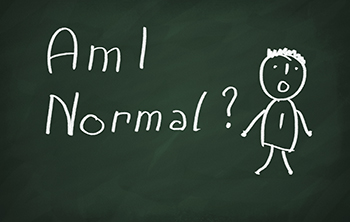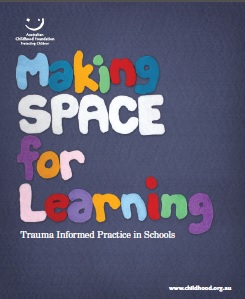
Mental Health, Young People and Trauma
This article was authored by Alexa Duke
Senior Training Consultant, Training and Professional Development at the Australian Childhood Foundation.
I was struck by a recent headline in a local newspaper that read: ‘Teachers wary of helping on mental health concerns’. In this survey by beyondblue, teachers commented that they do not have the time or resources to focus on the mental health of their students, despite believing mental health is as important as academic achievement.
But what is mental illness, and why is it on the rise in our children and young people? I believe it is possible that the increased diagnosis in mental health may be masking our understanding of, and response to, behaviours that are really manifestations of trauma.
In our work at the Foundation, over the past decade, we have made the latter (behavioural manifestations of trauma) area a core topic in our training delivery programs. Understanding then, how trauma manifestations and mental health intersect has become a key interest area of mine – one that was raised again by reading this headline. I wondered as you might also, what are the symptoms of these mental illnesses and our children and young people really able to learn when they are affected by them? Without attending to the mental health of their students, can teachers really teach their students?
In recent years diagnoses of attention deficit hyperactivity disorder (ADHD) in Australia have risen dramatically to 11.2%, close to 3% of Australians experience OCD in their lifetime, a million Australians are affected by eating disorders, the rates of depression and anxiety are increasing and with half of all mental health conditions emerging by the age of 14, it is no wonder teachers are wary! What other impacts is this having on our schools and our teachers? Is what we are seeing really a rise in mental illness, or are there other factors influencing behaviour? Perhaps we are in too much of a rush to diagnose and label young people before we take the time to look beneath the behaviour to find out what it is trying to tell us.
 We know that children who have experienced complex relational trauma can present with pervasive symptoms that include depression, various medical illnesses, as well as a variety of impulsive and self-destructive behaviours and developmental delays. Often these symptoms can lead to multiple unrelated diagnoses, such as bipolar disorder, ADHD, PTSD, conduct disorder, phobic anxiety, reactive attachment disorder and separation anxiety, and treatment can have an emphasis on behavioural control without any recognition of interpersonal trauma and lack of safety (van der Kolk &. Pynoos, 2009). Yet, as van der Kolk suggests, approaching each of these problems individually, rather than as expressions of a vast system of internal disorganisation, runs the risk of losing sight of the forest in favour of one tree. This diagnosis, or label, may obscure other interpretations of children and their behaviour and contributes to the belief that medication is the only answer.
We know that children who have experienced complex relational trauma can present with pervasive symptoms that include depression, various medical illnesses, as well as a variety of impulsive and self-destructive behaviours and developmental delays. Often these symptoms can lead to multiple unrelated diagnoses, such as bipolar disorder, ADHD, PTSD, conduct disorder, phobic anxiety, reactive attachment disorder and separation anxiety, and treatment can have an emphasis on behavioural control without any recognition of interpersonal trauma and lack of safety (van der Kolk &. Pynoos, 2009). Yet, as van der Kolk suggests, approaching each of these problems individually, rather than as expressions of a vast system of internal disorganisation, runs the risk of losing sight of the forest in favour of one tree. This diagnosis, or label, may obscure other interpretations of children and their behaviour and contributes to the belief that medication is the only answer.
Learning to be and stay calm can be a challenge for young people who have suffered trauma, particularly abuse or neglect, as they are continually in a heightened state of vigilance and can be easily triggered without knowing why (you can read more about these manifestations in ‘Making Space for Learning’ ). Combined, these manifest in behaviour which has similarities to ADHD, conduct disorders and reactive attachment disorders, and at the other end of the scale, disassociation, which can manifest in depressive symptoms. For this reason, it is so important that we try to go back to the experiences of the child and attempt to locate what may be driving the behaviour.
Our schools and teachers can offer traumatised children and young people hope of reconnecting with and understanding their world by engaging with them in relationships and creating safety for them in the classroom.
- Teaching and learning occurs in the context of the relationship, and teachers can build relationships that are respectful, compassionate, consistent and sustained over time.
- Teachers can help traumatised children and young people to identify and manage their emotions.
- Teachers can help traumatised children and young people to connect to their peers and understand their world.
- Schools can create a place of calm for traumatised children in their otherwise chaotic world.
- Schools can create predictability and a sense of belonging for the traumatised young person.
The challenge is of course to look through behaviour and understand respond to these children’s unmet needs.

